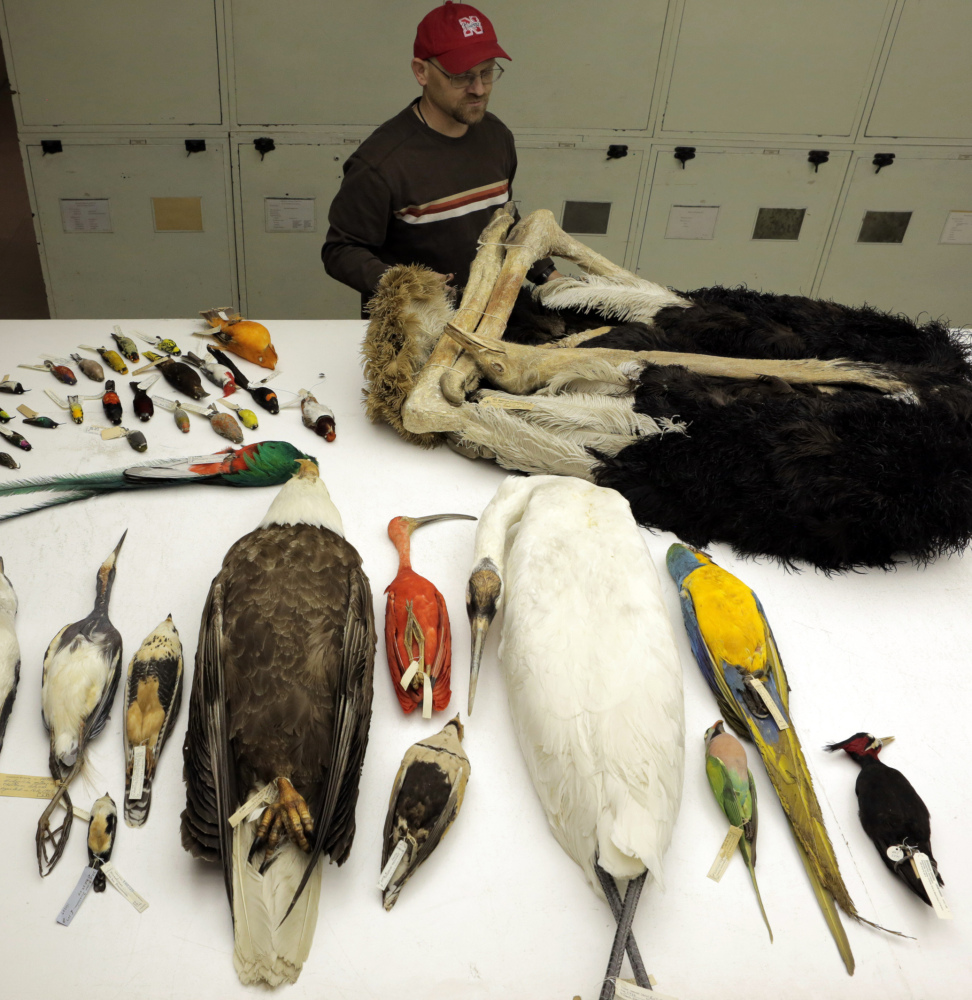A new gene map of nearly all living bird species has shaken the avian evolutionary tree, scattering some of the feathered dinosaur descendants to new perches and adding odd flourishes to their tales.
Parrots perch closer to songbirds, pigeons have fallen to bottom branches, a tiny wren shares a murderous lineage with the eagle, and the pencil-legged flamingo nests near the deep-diving grebe, according to studies published online Thursday in the journal Science.
The four-year, multimillion-dollar effort, which mapped the whole genome covering 48 bird species – 45 of them never mapped before – provides an enormous database for research that affects human health. Chickens, finches and pigeons are commonly used in laboratories, offering insight into human brain and fetal development, environmental risks and speech impediments.
The effort by more than 200 researchers at 80 institutions worldwide would have taken about 400 years for one computer to accomplish, and culminated with the simultaneous publication of 28 studies. Researchers said they expect many new findings to emerge over the coming months.
AVIAN FASCINATION
With more than 10,000 species, birds are the most diverse class of four-limbed vertebrates on Earth. In 2011, an estimated 47 million Americans shelled out nearly $41 billion for transportation, lodging, equipment and other costs associated with birding, according to the U.S. Fish and Wildlife Service.
“In addition to being very charismatic, birds are also the living descendants of dinosaurs,” said Tom Gilbert, of the evolutionary genomics section of the Natural History Museum of Denmark and an author on several of the studies. Nonetheless, Gilbert said, “it’s been very, very hard for people to work out the simple relationship between different orders of birds.”
By mapping 45 new genomes from each of 30 bird orders, the Avian Phylogenomics Consortium reordered that tree and opened paths toward a better understanding of humans. One study showed remarkable analogies between genes involved in vocal learning of birds and speech areas of human brains, for instance.
“There are lots of disorders that affect speech, and we can’t study nonhuman primates or mice for these,” said study co-author Erich Jarvis, a neurobiologist at Duke University School of Medicine and the Howard Hughes Medical Institute.
The methods pioneered by the consortium could revolutionize the way genome data are analyzed, said mathematician and computer scientist Tandy Warnow of the University of Illinois at Urbana-Champaign, who headed the effort to crunch the data, using several super-computing centers around the world.
RESEARCH COULD RESOLVE DEBATE
“We may actually change the trees on other groups, such as mammals, when we reanalyze them with better methods,” Warnow said.
Still, for ornithologists and backyard birders, the immediate effect of the studies was to be found in their potential to resolve – or extend – long-standing debates over the dinosaur descendants. Researchers now suggest they experienced several parallel “big bang” radiations into a wide array of species shortly after the extinction of the land-based dinosaurs some 66 million years ago.
Since then, distinct bird species twice independently gained the ability to learn sounds – hummingbirds and the ancestor of parrots and songbirds. At least two other times, branches lost vocal learning.
Other birds, such as the emu and ostrich, jettisoned flight, and almost all lost their right ovary.
And about 65 million years ago, an apex predator likely gave rise to all the major land birds, from the tiny finch to the massive terror bird, now extinct, says the studies.
“We are suggesting that the common ancestor of core land birds was an apex predator, and that this predatory trait has been lost several times,” said Jarvis, who led the Science study on vocal learning.
The overall genome was one-third as small as those of most mammals, said Guojie Zhang, head of comparative genomics at the National Genebank of the Beijing Genomics Institute-Shenzhen.
“The bird genome has experienced a massive gene loss,” Zhang said. “We found that 1,600 genes are completely missing from all bird genomes.”
Send questions/comments to the editors.



Success. Please wait for the page to reload. If the page does not reload within 5 seconds, please refresh the page.
Enter your email and password to access comments.
Hi, to comment on stories you must . This profile is in addition to your subscription and website login.
Already have a commenting profile? .
Invalid username/password.
Please check your email to confirm and complete your registration.
Only subscribers are eligible to post comments. Please subscribe or login first for digital access. Here’s why.
Use the form below to reset your password. When you've submitted your account email, we will send an email with a reset code.